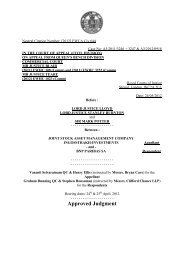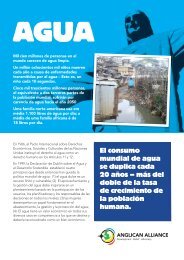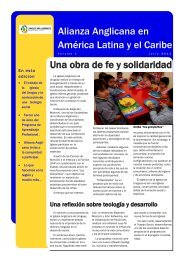Reference Guide for EAQUALS inspections - Support
Reference Guide for EAQUALS inspections - Support
Reference Guide for EAQUALS inspections - Support
You also want an ePaper? Increase the reach of your titles
YUMPU automatically turns print PDFs into web optimized ePapers that Google loves.
The main task of the Accreditation Panel is to guarantee consistency across different <strong>inspections</strong>.They will review the inspectors’judgments and grades <strong>for</strong> all areas and may ask <strong>for</strong> additionalevidence or justification <strong>for</strong> any grade, including grade one, during the moderation process. They mayalso propose a change of grades if they do not receive sufficient evidence from the inspectors <strong>for</strong> agrade one.Criteria <strong>for</strong> identifying Areas of ExcellenceThe following criteria <strong>for</strong> identifying areas of excellence are provided <strong>for</strong> guidance. However, it is theinspectors’task to provide evidence <strong>for</strong> and to justify their view that, in the context of the institution’sown development, outstanding quality rather than just compliance with <strong>EAQUALS</strong> standards has beenachieved in a given areaWhen awarding a grade 1 in an <strong>EAQUALS</strong> inspection, the aims are in line with the philosophy ofmotivation <strong>for</strong> continuous improvement:to reward excellence and to stimulate further improvement in institutions which havealready reached the required standards of membershipto identify features of outstandingly good practice which have been achievedGrade two is awarded when the institution fully meets <strong>EAQUALS</strong> standards in the relevantarea. Grade one can be given when the institution’s per<strong>for</strong>mance, in the inspectors’view,is outstanding in a given area. For each area, features of outstandingly good practice arelisted and can be used in the report to justify a grade one. The list is not exhaustive, butis intended as a guide <strong>for</strong> institutions and inspectors. It is NOT necessary that all of thesestandards should be met: they are indicators of high standards over and above the basicrequirements spelt out in the Charters. Institutions are also invited to tell the inspectorsabout features of their work which they consider to be of particularly high quality.In their report, inspectors are asked to give a brief summary of evidence, based on thefeatures provided in the guidelines below, to justify their proposal <strong>for</strong> a grade one.1.TeachingThe institution demonstrated a consistent level of high quality inits teaching: A number of examples of creative teaching, with originalmaterial, or creative adaptation of set course materials Evidence of teaching in which the principles of the CEFR –learner-centred and action-oriented –are clearly applied, witheffective use of the can do statements Teaching / learning approaches which are topical, useauthentic media and provide opportunities <strong>for</strong> learners toexpress their ideas and feelingsEvidence of systematic and effective teaching of pronunciationand intonation Enterprising and consistent use of technology and theresources of the Internet in the classroom and <strong>for</strong> individualworkWell-organised practices <strong>for</strong> identifying learners’needs andwishes, and their involvement in review of what has beendone and in planning Evidence of advice and practice of learning–to-learntechniques to promote continued autonomous learning byparticipants Examples of activities which encourage inter-culturalawareness and competence among learnersAny other evidence of innovative and creative good practice31<strong>Reference</strong> <strong>Guide</strong> to the Inspection Scheme <strong>for</strong> institutionsversion 6.2© <strong>EAQUALS</strong> 2011


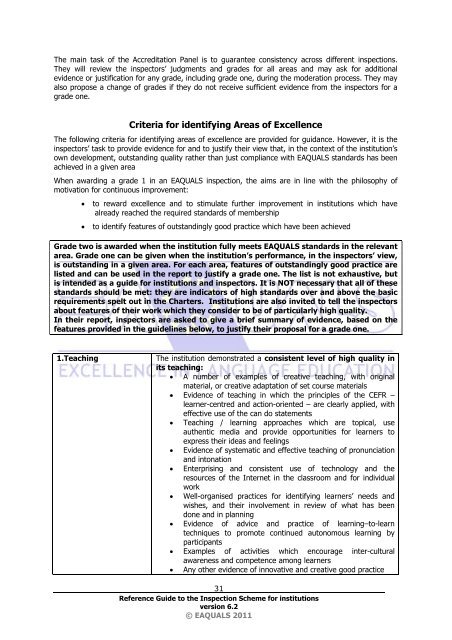
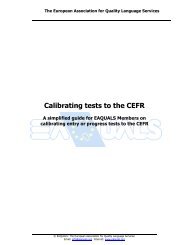
![[2012] UKUT 399 (TCC)](https://img.yumpu.com/51352289/1/184x260/2012-ukut-399-tcc.jpg?quality=85)


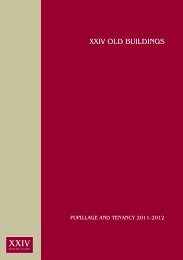
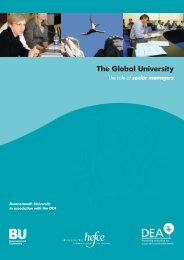

![Neutral Citation Number: [2009] EWHC 3198 (Ch) Case No: CH ...](https://img.yumpu.com/50120201/1/184x260/neutral-citation-number-2009-ewhc-3198-ch-case-no-ch-.jpg?quality=85)
